B A N D U N G







B A N D U N G









Bxxxxxandung is the third largest city in xxxxxIndonesia and the capital of West Java Province. It is one of Indonesia’s major centers for tourism, education and industry,andhasplayedasignificantrole in the political, economic, and cultural developmentofthecountry(Sarosaetal., 2018). Bandung City is part of the Bandung Metropolitan Area consisting xxxxxxx
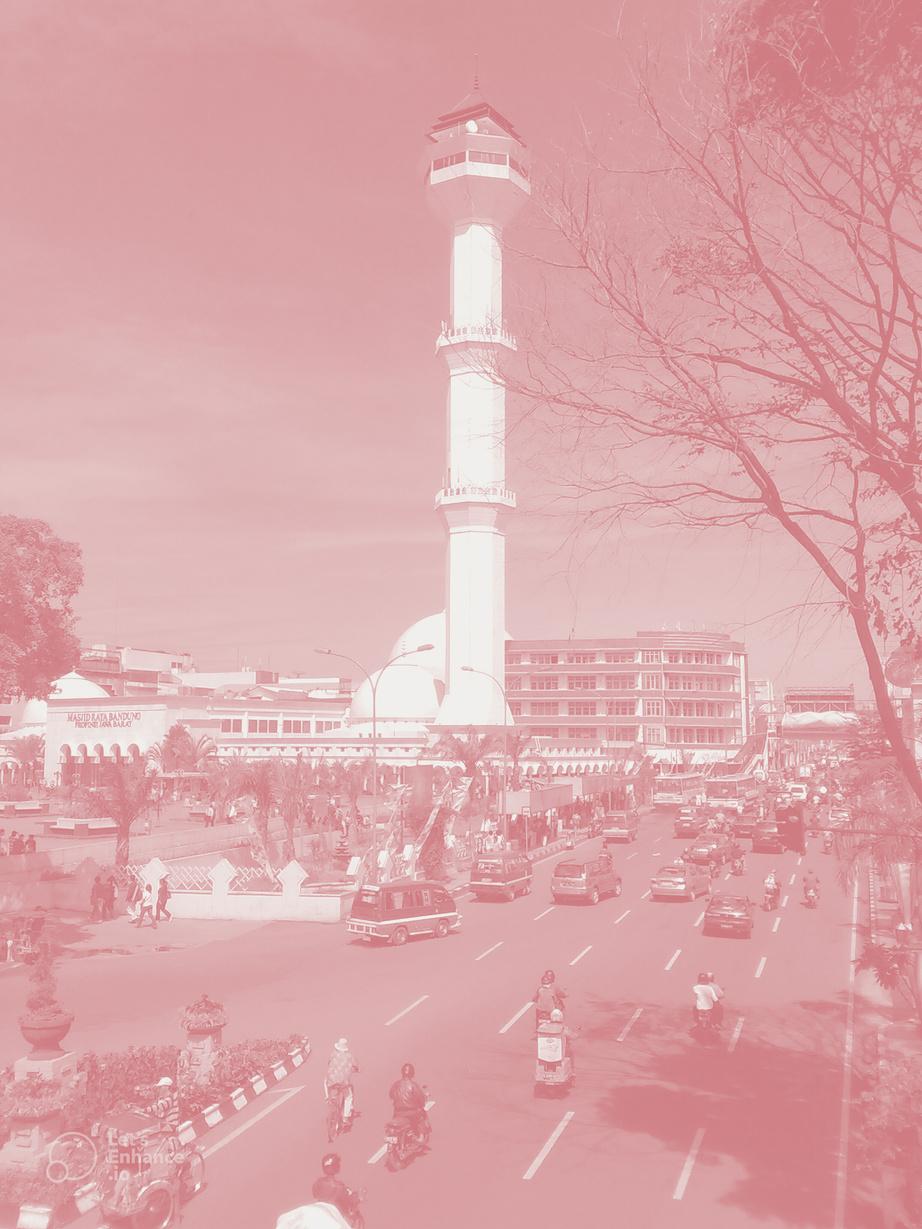
of five (5) local governments namely, Bandung City, City of Cimahi, and the regencies of Bandung,WestBandung,andSumendang.
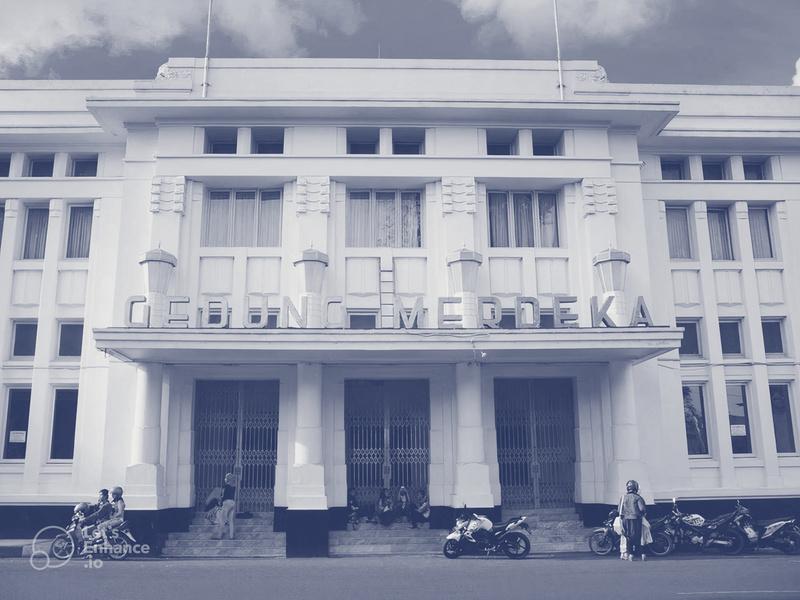
BandungCitywasfoundedin1488anditstarted in Alun-Alun, the main city square where public official meetings, even military demonstrations, andmajoreconomicactivitiestakeplace.When the Dutch occupied the city in the 15th century, BandungCityprogressedtoincludethenorthern parts.Developmentswereprioritizedinthenorth astheDutchlandlordsandEuropeanexpatriates chose to settle around the area due to its cool weather.Itwasinthesouthernareasthatpeople of lower social classes and ethnicities slowly poured in. This situation naturally created social segregation among the residents based on the existing political power, wealth, and ethnicity (Siregar,1990;Voskuil,2007ascitedinTariganet al., 2016). Thus, in regard to its urban forms, infrastructure developed in consideration of a growingpopulationandhumanactivities.
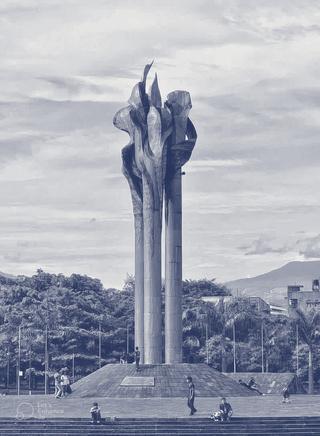
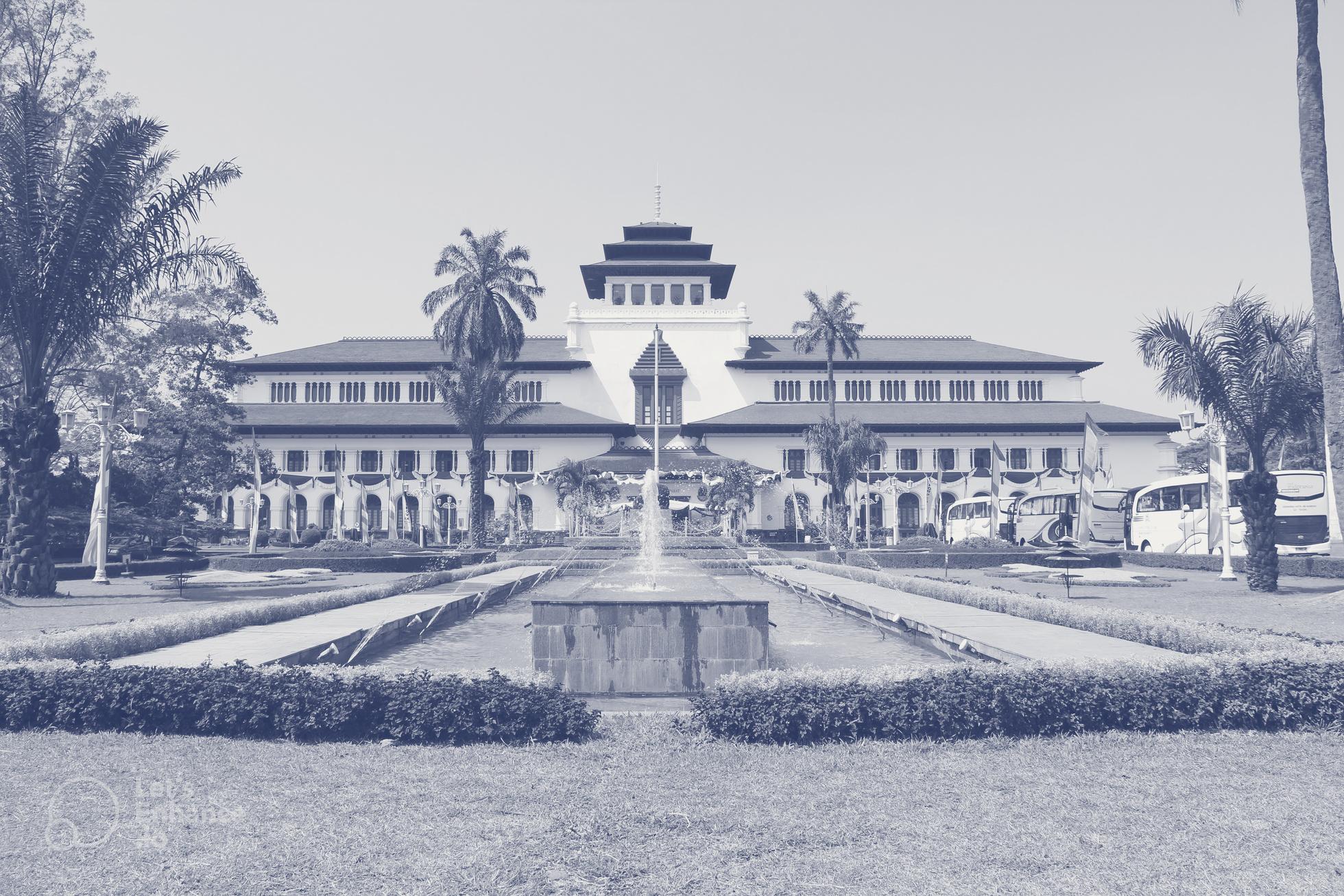
As the city became more complex, the master plan for the city development applied the concentric zone model. Alun-Alun became the officialcitycenter,orthecenteroftherings.The residentialareasandbusinessescouldbefound
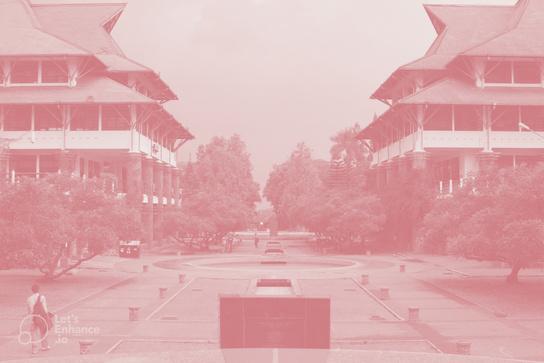
in the second ring, and the residential areas for workers andagriculturalareasareinthe third and subsequent rings. The more recent city center is establishedattheGedebage.

Over the past three (3) centuries, Bandung has experienced high rates of urbanization. This has placedenormouspressure on the capacity of the city and metropolitan region governments to meet the demand for basic infrastructure, housing, and urban services. Traffic xxxxx congestion, waste management, and poor planning have compounded the management and development problems facing the city (Sarosa et al., 2018).

Themostchallengingissuenow becomes the profiling of public infrastructure to respond to these problems and new economicopportunitiesbrought aboutbytherapidurbanization.

Alun-alun is a 1-2 hectare public park in the heart of Bandung, WestJava DeemedasBandung’szeropoint,itishometoseveral significantlandmarkssuchastheBandungGrandMosqueandthe Merdekabuilding.ItspresencenwasfundamentalforoldBandung residentsbecauseitwasregularlyusednotonlyasapublicspace (the government used it to announce public information and demonstrate military power to the public through parades and performances)butalsoasameetingpointforinteractionsamong the local residents for trading goods, performing art, and holding othersocialevents(Kunto,1984).




Bandung was one of the cities included in the Declaration of the Smart City in 2015, with governmentsfocusingonthedevelopment and construction of smart cities prioritizing networks of knowledge, technology,&investments(Tarigan, Sagalaet.al.,2016).
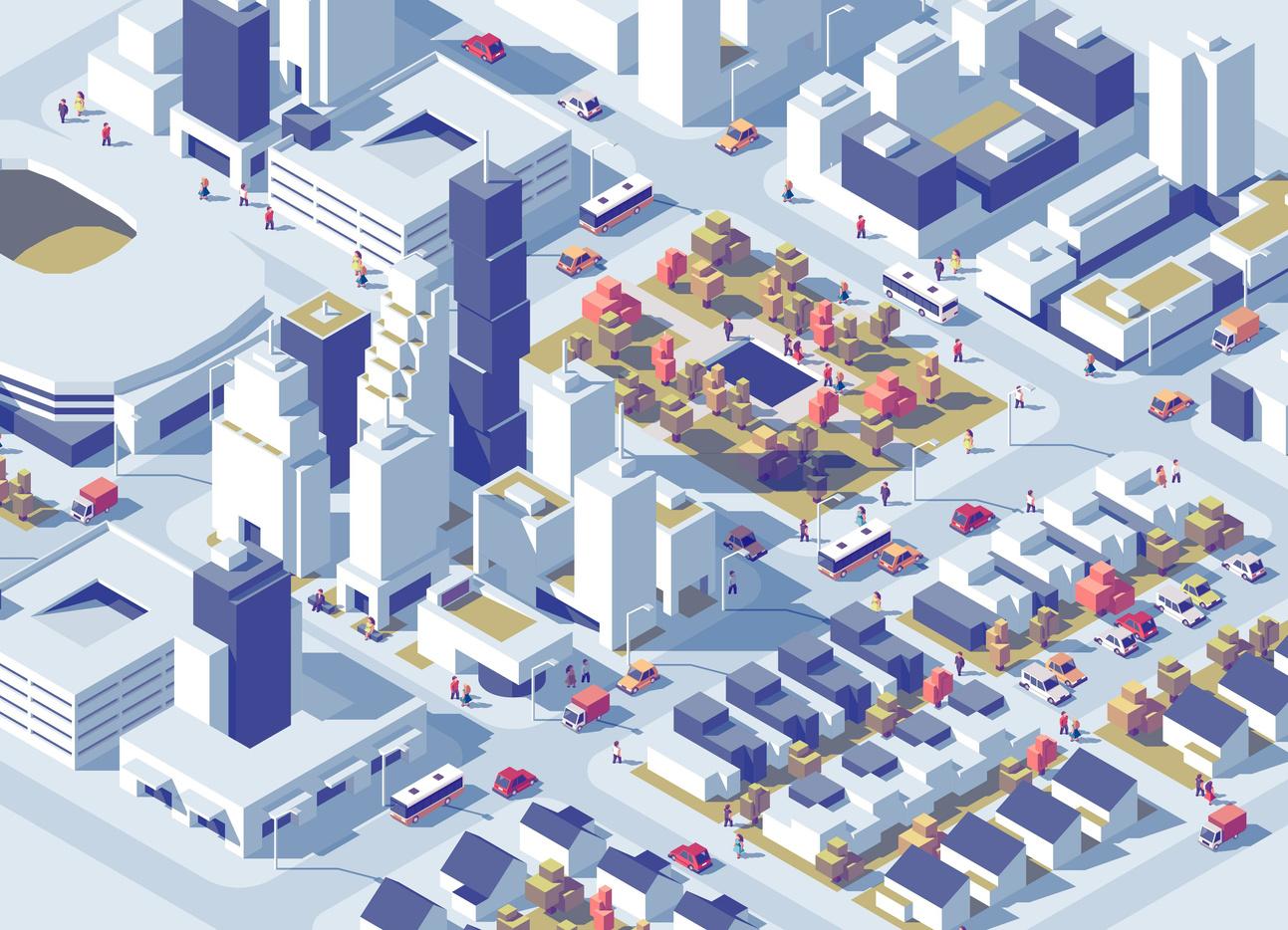
It was the mayor of Bandung, Ridwan Kamil who further mobilized Bandung in 2018 with his concepts of design, technology, and social innovation. Mayor Kamil employed “urban acupuncture” or small scale interventions to make Bandung a smart city (Roño, 2018). Since 2015, ICTs have played a role in the governance of Bandung. With an example out of the 680 apps deployed that included online registration systems, and even performance monitoring systems forpublicservants.


Another example is the emusrenbang, a bottom-up approach of policymaking that BandungCityappliedtotheir
regional and city levels (Anindito, Sagala, & Tarigan, 2022). This encouraged more citizen participation with governance especially with knowing what programsareneededtobedoneto betterpublicservice.
Another example is the Lapor program. This is the government toolthatwasutilizedbyBandungas acomplaintmechanism(Natalisa& Kemkhadze, 2021). Started in 2015, it has since been frequently used for the purpose of receiving reports on anyfederalpublicservice,andeven to track officials performance (Arsalan&Latif,2019)
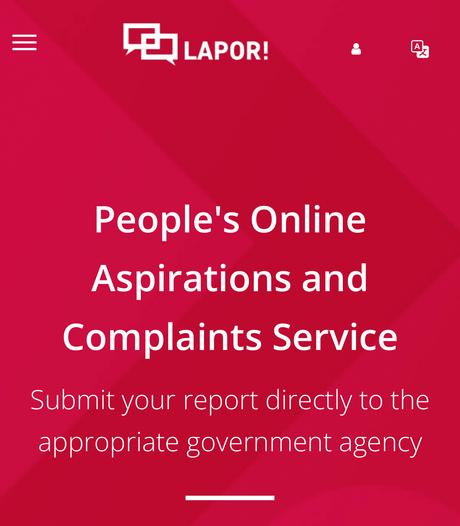

Firstly, Roño (2018) cites the 2017 study by Future Cities Laboratory shows thatBandung'shighICTliteracyandparticipationisnotreflectedinmanyof thecity'skampungsorurbansettlements.
Second, Arsalan & Latif's (2019) public satisfaction survey presents the opportunity to recognize e-government mechanisms as needing further monitoring.
Lastly, Anindito, Sagala, and Tarigan (2022) would reveal that emusrenbang has increased transparency and accountability of the government's planning process with its local government units, but new issuesemergewiththedisconnectin(1)channelingthevoicesofcitizenand (2)participation.TheyfoundthattheLGUs’partnershipwiththestakeholders can become undermined due to the projects the latter was rejected by the former. This forms a negative attitude towards the participation of the stakeholdersasbeingunwelcomed.
Thesechallengeswouldshowusthattherearenewquestionsthatmustbe addressed with deploying ICTs for governance, it is a facet that we in the Philippinesshouldconsider.
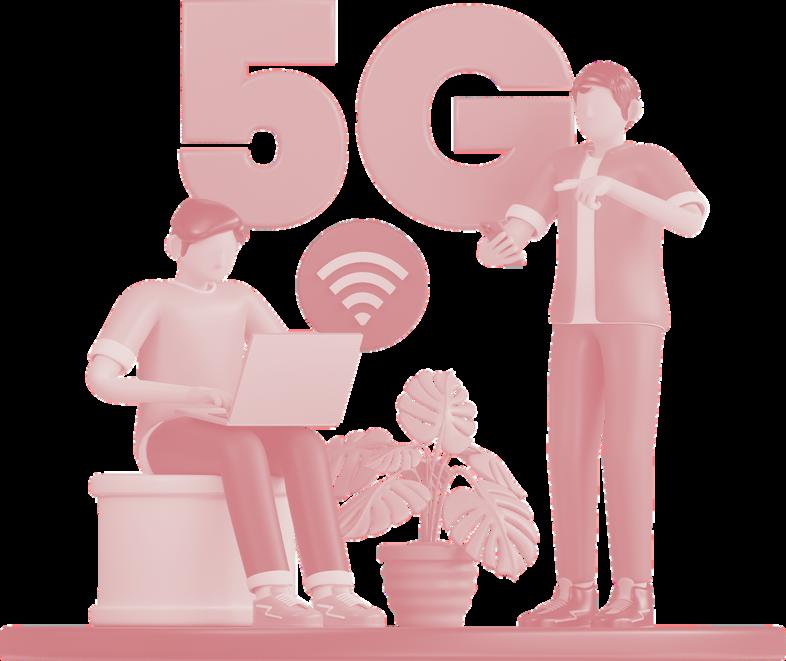
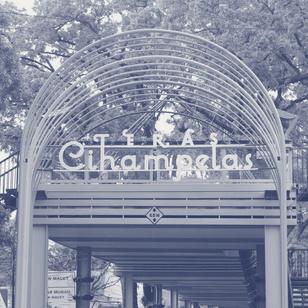
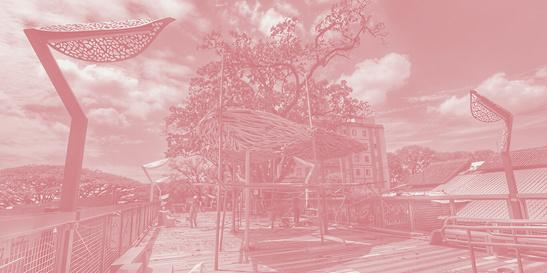
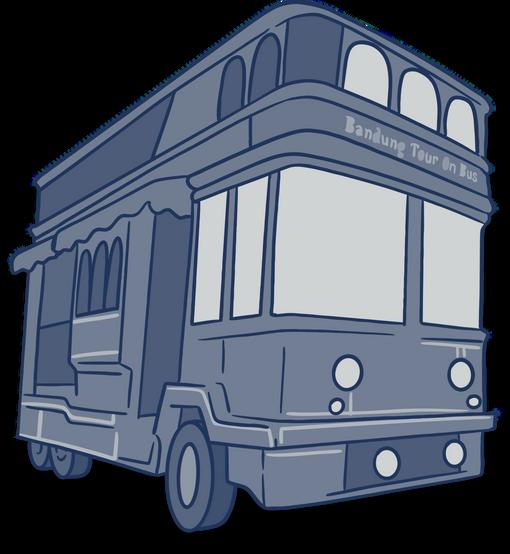
The city government of Bandung put forth the Bandung Transport Masterplan in 2014 toaddressthelackingpublicinfrastructure by, first, introducing different commuting options to people. It applies transitorienteddevelopment(TOD)principlesthat enables creation of compact, walkable, pedestrian-oriented, mixed-use communities centered around high quality train systems.
Aimingtocoverallthemaincomponentsofaninnovativetransportsystem, the project includes a wide range of proposals, starting from LRT, monorail, busrapidtransits,andcablecarandtakingintoconsiderationsolutionsfor non-motorized transport such as elevated pedestrian walkways and a bike-sharingsystem.
In 2017, they inaugurated a skywalk that is 450-meters in length located in the CihampelasRoad, one of the busiest roads in the city, to decongest it by removing traffic blocks such as street vendors and pedestrians and transferringthemtoanelevatedwalkway.Andasof2018,BandungCityhas 200bicycleunitsforrentacrossthewholecitythatuseelectronicpayment andtrackingsystem.
The project also explores application of smart technology to the mobility system of the city with the aim of improving the quality of service By xxxxxxxx integrating electronic payments, GPS, online booking, and improved traffic controlsystem,thewindowtimeforusing public transportation will be lessened as the payment system will become efficient, the transfer from one mode of transportation to another will be easier, and the arrival and departure schedules ofvehicleswillbefixed,amongothers.
Electronic payment system has been implemented in the LRT and in the two rapid bus transit systems operating in the city, namely, Trans Metro Bandung and Trans MetroPasundan, since the project launch in 2014.
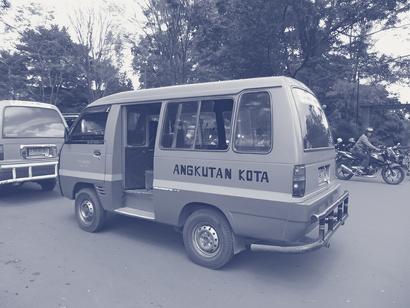

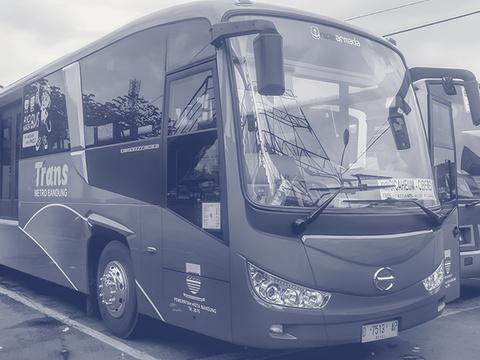

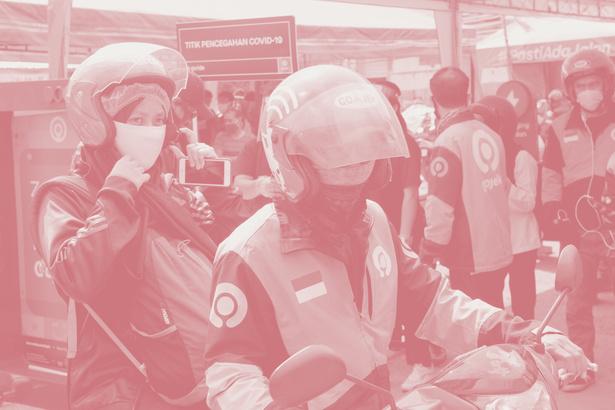
However, there are still so much to be done with regards to traffic congestion, the integration of physical environment with the digital environment of the smar inclusionofinformalmodesoftran – angkot and ojek – in urban ma and planning, and the acceptan general population to these dev Transport hopping is the no commuting in the city of Bandun of a fragmentation of brands and Asaresult,passengersmustpaya transferring to other bus lines Moreover, train fare is also expen , the general population thus prefer to use TNVS,foritoffersapoint-to-pointserviceand the fare does not have much difference to train; angkot, for it is much cheaper and can traverse smaller roads as shortcuts to their destination;orprivatevehicles.
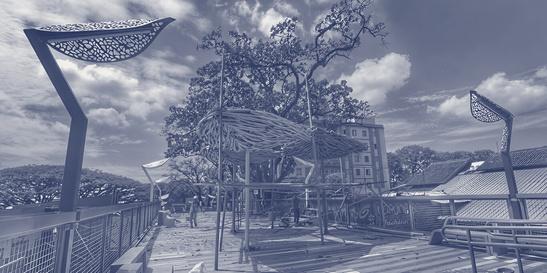




▪Asasmartcity,theadministrationofBandung City has put an emphasis on delivering local services and leveraged technology in the process.However,oneissueidentifiedisthatthe strides that are being taken are not inclusive enough. Most of Bandung’s smart initiatives remain inaccessible for many, especially techilliterate and those from remote areas. To leverage digital technologies for greater inclusion and address the digital divide, there is a need to improve ICT infrastructure. The government's efforts to develop ICT infrastructure are realized through the projects such as the Palapa Ring which is a $1.5 billion priority xxx infrastructure project featuring 35,000 kilometers of land and sea cables. Another project is the SATRIA-1, a government multifunction satellite that strengthens telecommunication services. It is paramount that the government commits in monitoring and ensuring that the projects will effectivelyaccelerateICTinfrastructureinthecountry.
▪ Considering the significant influence of digital technology now in every government process, a baseline level of ICT literacy must be required for every public servant, particularly those in leadership roles. An example is the government of Canada with its increasing efforts to equip its public servants with stronger digital skills. Committed to placing public service at the forefront of the digital age, Canada has created aDigitalAcademyhostedattheCanadaSchool of Public Service. The academy brings together contributors from various levels of government, the private and the nonprofit sector, each sharing their strengths, knowledge, experience, and expertise to improve government services. xxx The academy aims to advance the understanding of digital environments, what it means to public servants as professionals and service providers. The curriculum offered at the academy will support all levels of public servantsintheireffortstomodernizeoperationstodeliverthekindofdigital servicesthatCanadiansexpect.



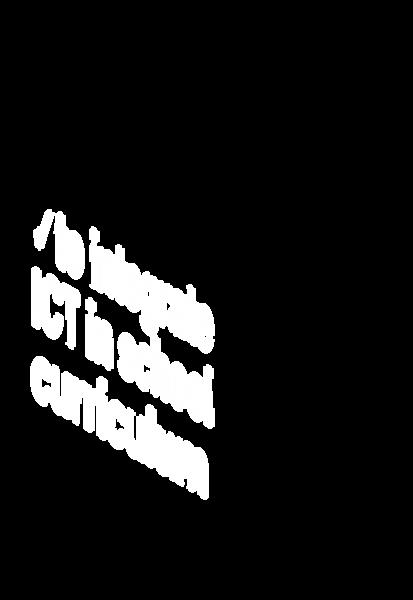



▪ Beyond numeracy and basic literacy, digital skills have become increasingly indispensable for every citizen, whether in the workplace, academe,orevenindailylife.Developingamore open, inclusive, and secure society also necessitatesdigitalskills.Inengagingwithdigital infrastructures, people must be aware of cybersecurity concerns as well as privacy and data risk factors. By being digitally literate, one can easily handle these issues brought on by technology. With this, it is recommended that, like other competencies, digital literacy should beginintheclassroom. Bandung must equip its xxx current and future generations with the necessa nt should establish necessary infrastructure, provid gy s, and ensure that teacher preparation programs, curricula, and learning standardsareinplace.
▪ A recent study conducted by The Economist Intelligence Unit (EIU) placed Indonesia 57th among 100 countries on the Inclusive Internet Index, indicating there is still a huge amount of worktobedonewhenitcomestobuildingafully functioningdigitaleconomy.Theindexmeasures four aspects: availability, affordability, relevance, andthereadinessofpeopleinusingtheInternet. The study found that local providers were the ones dictating the price of data in the market and there was a lack of policies founded on the ideaofInternetaccessasafundamentalright.
Hence, to expand connectivity and universalize access to good quality Internet, we must not just address the hard infrastructure part, especially alongthelastmile,butalsosofterinterventionsrelatedtocompetitionand sector regulation which have a major bearing on the quality and affordability of the Internet, especially for the less affluent. Sweden, for example, has ingrained the notion that Internet access enables the full exerciseofhumanrights,toppingthe2020InclusiveInternetIndexasithas implemented progressive Internet inclusion policies over the years, among thembeingpromotingcompetitionbetweenInternetServiceProviders.
▪ In efforts to increase the number of passengersongovernment-runbussystems, Indonesian city governments like Bandung have viewed various informal modes of transportationasunwantedcompetitionand unviabletransportationalternatives.Contrary tothis,astudyconductedbyKotaKita(2015) found that informal forms of transportation like angkot may offer strategies to improve, ratherthanrestricturbanmobility.Itprovides crucialserviceincludingon-demandmobility for the transit-dependent, jobs for low skilled xxx workers, and service coverage in remote and impoverished areas inside the metropolis. However, it is equally important to recognize that informal formsoftransportationhavecostssuchasincreasedtrafficcongestion,air andnoisepollution,andtrafficaccidents.
With this, it is recommended that instead of the current exclusionary approach of the city government, cooperation and co-management with informal service providers must be considered as it can produce benefits forbothsides.Angkotsandojeksmustbeformalized. In this way, we can improve the working conditions of the workers and better the services provided.
▪ Many people prefer to travel in a private car compared to public transit because of the comfort, reliability, and prestige that is linkedtousingaprivatecar.Thebestwayto encourage people to reduceprivatevehicle usage is to make public transport an attractive and everyday choice for the residents. City government should focus on making transport services more affordable, accessible, & convenient for its constituents. Furthermore, they should promote the use of xxx state-owned public transit buses by providing schedule and route information on different social media platforms and at bus terminals. Another recommendation is to campaign for greener transportation by encouragingpeopletocycleorwalktotheirdestinations.Thiscanbedone byassigningbikelanesandmakingwalkablecities.
▪ Mobility information is paramount as it can helpmakecitiesbecomesmarterandprovide citizens with a better transportation system. It can provide real-time information of bus and train arrival and departure times, alert about congested areas, and suggest alternative routes. The data can also be used to identify road safety and security hotspots thus enabling immediate response and understanding of the problems in specific places and how they may be resolved. Additionally, this information can aid city xxxxxx administrators in creating and maintaining better public transportation, mobility infrastructure, and route designs. Unfortunately, such data collection process is often expensive and time consuming. Hence, it is recommended for Bandung to utilize new data sources provided by the modern technologies that we have such as CCTV, sensors, google traffic, and crowdsourcing applications. With 357 CCTV cameras in almost 100 locations,Bandunghastheabilitytoemployasimilarapproachtofillsuch datagapsandtobettermanagethecity’stransportationsystem.
▪ Industrialization has been a priority of Bandung and Indonesia as a whole in transforming the country into a developed economy. On one hand, the shift to an economydominatedbyindustryandmachine manufacturing have led to creation of new jobsandreducedboththecostsandpricesof goods and services. On the other hand, it has added to the labor market inequality. Especiallyconsideringthatmosttechnological changes tend to benefit high skilled workers more.Henceitisparamountforthecitytofind thebalancebetweenpeopleandtechnology by equipping the people with necessary skills. xx The city could start with using its more than 80 higher education institutions, particularly Bandung Institute of Technology, as tools to capacitatepeople.
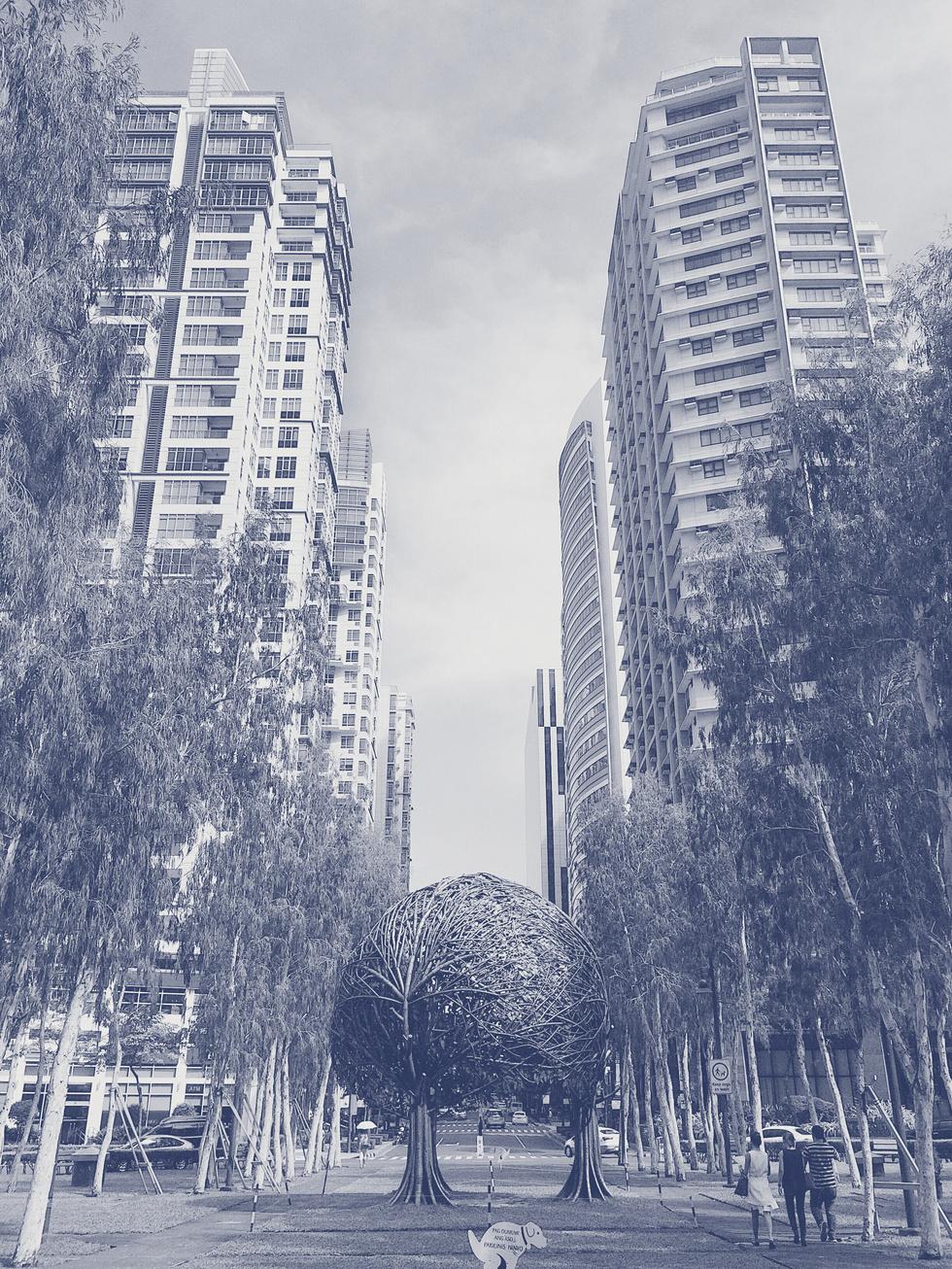
Improving urban life by reimagining public spaces. The city of Bandung has initiated severalprojectstoimprovethequalityoflifein the city. Such projects include upgrading public parks to thematic parks and building walkablestreets.Followingtheexampleofthe City of Bandung, the Philippines should also adopt this strategy to improve the quality of life in urban areas. This can be done by buildingmorepublicparks,greenspaces,and walkableinfrastructureinthecities.
Sincetheearly1990s,thePhilippineshasbeen putting efforts into building public spaces as seen in the establishment of Bonifacio Global City(BGC)inTaguig,withits10-hectareGrand Central Park, as well as the Nuvali in the province on the outskirts of Metro Manila. However,theproblemliesintheinaccessibility of these spaces to the masses. It is difficult to commute to these spaces, especially to BGC which can only be reached through the BGC Bus. Public spaces must be located in areas frequented by the people, such as near schools, churches, and supermarkets and just not near [usually high-end] malls, and must be accessible by different modes of transportation, such as trains, buses, and jeepneys.

Bandung City boasts its 450-meter skywalk, an elevated walkway built on one of the busiest roads in the city. The street vendors, who previously occupied the sidewalks of the road and caused traffic congestion, were allowed to set up business in the skywalk. It also provided a safer way for pedestrians to walk. Creating skywalks can be a solution to the worsening traffic situation caused by increased foot traffic. If skywalks were to be built in the Philippines, it must be located in places where there is a large number of commuters or close enough to different modes of public transportation, particularly publictransit.
footbridgealong ▪ Commonwealth AvenueQuezonCity
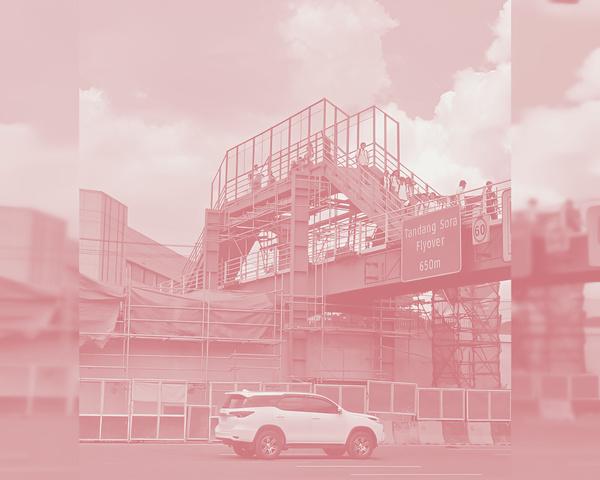
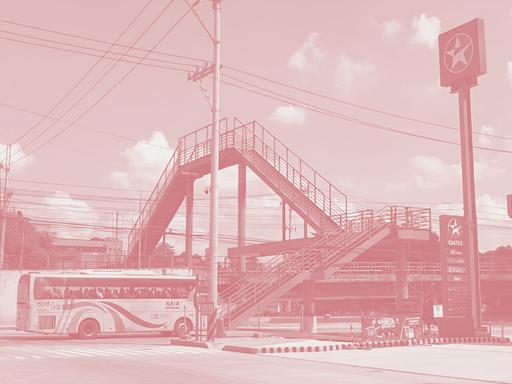 ▪ footbridge along EDSA in Kamuning, QuezonCity
▪ footbridge along EDSA in Kamuning, QuezonCity

The transportation system of the City of Bandung and the Philippines is similar.Bothsufferfromsevereroadcongestionandinadequate,inefficient, unsafe, and outdated public transport. In solving Bandung's transportation problem, they developed the Bandung Transport Masterplan that laid out the foundations for improving the city’s transportation sector. Several innovations from this master plan can be adapted by the Philippines to ameliorate its transportation problems, particularly, the creation of a multimodal transportation system, reduction of the use of private cars on city roads, and the application of smart technology to the mobility system ofthecity.

The urban public transportation in the Philippines is dominated by road-based transportation options su h as jeepneys, buses, and taxis (“Philippines: Transpo Sector Assessment, Strategy, and Road Map,” 2012), and xxx
informal modes like tricycles, pedicabs, and habal-habal, among others This limited mode of transportation is insufficient to cater to the growing needsofurbancitiesinthePhilippines.Toalleviatethetrafficsituation,the governmentmustreorientitsunderstandingoftransportation and change the car-centric attitude dominating its administration to human-centric designs. Similar to what Bandung has implemented, the government must exploretheapplicationofTransitOrientedDevelopment(TOD)principlesin urban planning and design to encourage people to use multi-modal transportation.
To encourage people to use various modes of transportation, the government should roll out modernization programs for public transportation without burdening its stakeholders by providing enough support and subsidy to improve efficiency and achieve sustainable transportation. Furthermore, it is recommended to invest in necessary infrastructure such as pedestrians and PWD-friendly infrastructures, dedicatedbikelanes,andimprovementofwater-basedtransportservices. Inadditiontothedifferenttransportationmodalities,thegovernmentmust build integrated and connected terminals in various strategic locations to allowcommuterstochangemodalitieswitheaseandcomfort.



AreportfromtheMetroManilaDevelopmentAuthorityshowedthatprivate cars and motor carrier vehicles have the largest share in terms of volume onmajorthoroughfaresinthemetro.In2022,MMDA(2023)recordeda33% increase in the Annual Daily Average Traffic in some areas. The increasing number of vehicles on city roads means greater traffic congestion that could affect the quality, and efficiency of travel. To solve this, the xxxxxxxxxxxx
government must first increase the availability and accessibility of public transport systems by investing,improving,andexpandingthecoverage of the MRT, LRT, and PNR lines and other mass transportation modes. The second is to put up a BusRapidTransit,andexpandtheoperatinghours of these public transportation modes. Thirdly, the xx governmentshouldencouragetelecommutingasanalternativetoreduce the volume of people and vehicles at peak hours. Finally, the government shouldimplementstricterrulesonvehicleregulationandreviewitscurrent policies,morespecifically,thenumbercodingsystem.
It is also recommended to implement smart payment/ automaticfarecollectionsystemsforbuses,taxis,TNVS, and long-distance jeepneys and UV Express to make paymentfasterandeasier.Inaddition,toimprovetraffic
xx management, the government must implement a unified traffic management and apprehension system across Metropolitan Manila to bettercontroltheflowoftraffic.Further,itisalsorecommendedtoreview the placement and operation of traffic control signals in major roads in Metropolitan Manila and strategically assess which secondary and intersectingroadsmayneedtrafficcontrolsignalstopreventgridlockand promote road safety and ethics. Finally, the government should maximize theuseofICTsuchassocialmedia(eg Twitter)intrafficmonitoringand faster response to clients’ inquiries and complaints and during emergencies.


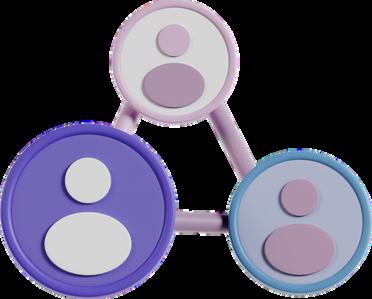



The country has made progress in implementing ways of turning its cities into “smart cities”, but studies from the Philippine Institute of Development Studies (PIDS) have shown that the degree of its application still faces many challenges (Ronquillo, 2022). These challenges include data interoperability, lack of data repositorie risk mitigation strategies (especially with the current issues w have with our data security and spam texts), monitoring a assessment,accountability,etc.
More government agencies have also been cited in these studies and their role in bettering awareness of LGUs with smart cities. It is suggested that there must be a stronger coordination between different levels of government. Gap assessments in technology needs,especiallythecapacityin the development of new infrastructure relating to ICTs, can be addressed if the local xxxx level of government–the primary movers of change–are mad familiar with partnerships with the Department of Science an Technology - Philippine Council for Industry, Energy and Emergin Technology Research and Development (DOST-PCIEERD); the DIC should continue its facilitation of connectivity, and the DILG “can promote and monitor the adoption of smart city indicators, and the introduction of accreditation systems” to encourage more LGUs and development projects that can lead the way for more areas to be smart cities (Ramos, Lorenzo, Ancheta, & Ballesteros, 2021a).



With regards to monitoring and evaluation in governance, deployment of ICTsshouldencourageeasieraccessibilityoftheseprocessesforcitizensto ask for accountability and for Filipinos to better practice their right to information.
Moreover,asthecoreoftheutilizationofICTingovernance is interoperability and transparency, the Philippines, with several local governments units envisioning to be a smart city,mustbeequippedwithtechnologiesthatcandevelop secure data repositories and enable faster evidencebased decision-making (through sharing and transferring ofdatatocommonrepositories)(Ramos,Lorenzo,Ancheta, &Ballesteros,2021b).Awhole-of-nationapproachmustbe undertaken to allow collaboration with the private sector andconsultativeregulatorymechanismsonthesideofthe government. Furthermore, the government should be transparent in the use of data collected from its constituents. Data protection laws must be expanded to specify which data are being collected from the people and the manner in which data are being used, handled, and kept. This is to increase public trust, which is a key element in the success of a smart city, especially that Filipinosaregenerallywaryofgoingdigital.
To juxtapose Bandung and the Philippines, the latter’s familiarity with the use of ICTs should be diligently studied and like Bandung’s constituents, be able to develop xxxxxxxx applications like e-musrenbang and the Lapor! program to bring closer citizenparticipationinthepolicymakingandensureproximityofthepeople to the mechanisms and workings of their local governments This can especially be applied to the Local Special Bodies of LGUs, such as local school boards, and local development councils, among others to virtually operationalizetheirpracticesofaspeedyorganizationalmanagementand de-bureaucratizing procedures, especially for initiation of projects that requiresassistanceandcollaborationinbetweenthesebodies.

Anindito,D.B.,Sagala,S.A.,&Tarigan,A.K.M.(2022,April).e-Musrenbang:A digitalframeworkforlocalparticipatoryplanningatthecommunity level.InternationalDevelopmentPlanningReview,44(2),191-216.
https://doi.org/10.3828/idpr.2021.5
Arsalan,S.,&Latif,D.V.(2019,January).PublicSatisfactiononTransparency ofE-GovernmentInformationinBandungCitytoPreventCorruption. InternationalJournalofInnovation,CreativityandChange,6(8),1-10.
https://www.researchgate.net/publication/339975041 Public Satisfaction on Transparency of EGovernment Information in Bandung_City_to_Prevent_Corruption
Edelman,D.,&Gunawan,D.S.(2020).ManagingtheUrbanEnvironmentof Jakarta,Indonesia.CurrentUrbanStudies,8,57-106. https://doi.org/10.4236/cus.2020.81003
KotaKita.(2015).TheAngkotsofsolo:Informalpublictransportinacentral JavaneseCity.KotaKita:ACityForAll.RetrievedMarch8,2023,from https://urbanlaunchpad.github.io/kotakita/project-angkot-study.html
MetroManilaDevelopmentAuthority[MMDA].(2023,April18).Vehicle VolumealongCommonwealthAvenue.Facebook.
https://web.facebook.com/MMDAPH/posts/535951728701894/?
_ rdc=1& _ rdr
Natalisa,D.,&Kemkhadze,S.(2021,October2).SP4N-LAPOR!andIndonesia's penchantforsmartgovernance.TheJakartaPost.
https://www.thejakartapost.com/academia/2021/10/02/sp4n-laporand-indonesias-penchant-for-smart-governance-.html
Philippines:Transportsectorassessment,strategy,androadmap.(2012).In AsianDevelopmentBank.AsianDevelopmentBank.
https://www.adb.org/sites/default/files/institutionaldocument/33700/files/philippines-transport-assessment.pdf
Ramos,T.P.,Lorenzo,P.J.,Ancheta,J.A.,&Ballesteros,M.M.(2021a, December).ReadinessofPhilippineCitiestoSmartCityDevelopment. RetrievedfromPhilippineInstituteofDevelopmentStudies:
https://pidswebs.pids.gov.ph/CDN/PUBLICATIONS/pidsdps2133.pdf
Ramos,T.,Lorenzo,P.,Ancheta,J.,&Ballesteros,M.(2021b).Readinessof PhilippineCitiestoSmartCityDevelopment[DiscussionPaperSeriesNo. 2021-03].PhilippineInstituteforDevelopmentStudies.
https://pidswebs.pids.gov.ph/CDN/PUBLICATIONS/pidsdps2133.pdf
Roño,R.A.(2018,March).Smartapproachestopromoteinclusive governanceinBandung.LivableCities.https://www.livablecities.info /smart-approaches-governance-bandung
Ronquillo,A.(2022,August16).Smartcities.RetrievedfromPhilippine InstituteforDevelopmentStudiesWebsite:https://www.pids.gov.ph/ details/news/in-the-news/smart-cities
Sarosa,W.,Mulyana,W.,&Roberts,B.(2018).Bandung,Indonesia.In PartnershipsfortheSustainableDevelopmentofCitiesintheAPEC Region.Asia-PacificEconomicCooperationPolicySupportUnitAsiaPacificEconomicCooperationSecretariat.https://www.apec.org/docs/ default-source/publications/2017/6/partnerships-for-the-sustainabledevelopment-of-cities-in-the-apec-region/toc/summary.pdf?
sfvrsn=b6608ea7 1
Singapore’sCentreforLiveableCities(CLC),inaninterviewwiththethenBandungCityMayorRidwanKamilin2015duringtheWorldCities Summit.YouTube.https://www.youtube.com/watch?v=WIkH_FUYB-c
Tarigan,A.K.M.,Sagala,S.et.al.(2016).Bandungcity,Indonesia.Cities:The InternationalJournalofUrbanPolicyandPlanning,50,100-110.
https://doi.org/10.1016/j.cities.2015.09.005
UNHabitat.(2018).Bandung:CityContextReport.
DionMBD.(2018).GreetingsfromBandung2030[Illustration].Behance.
https://www.behance.net/gallery/61975093/Greetings-from-Bandung2030

